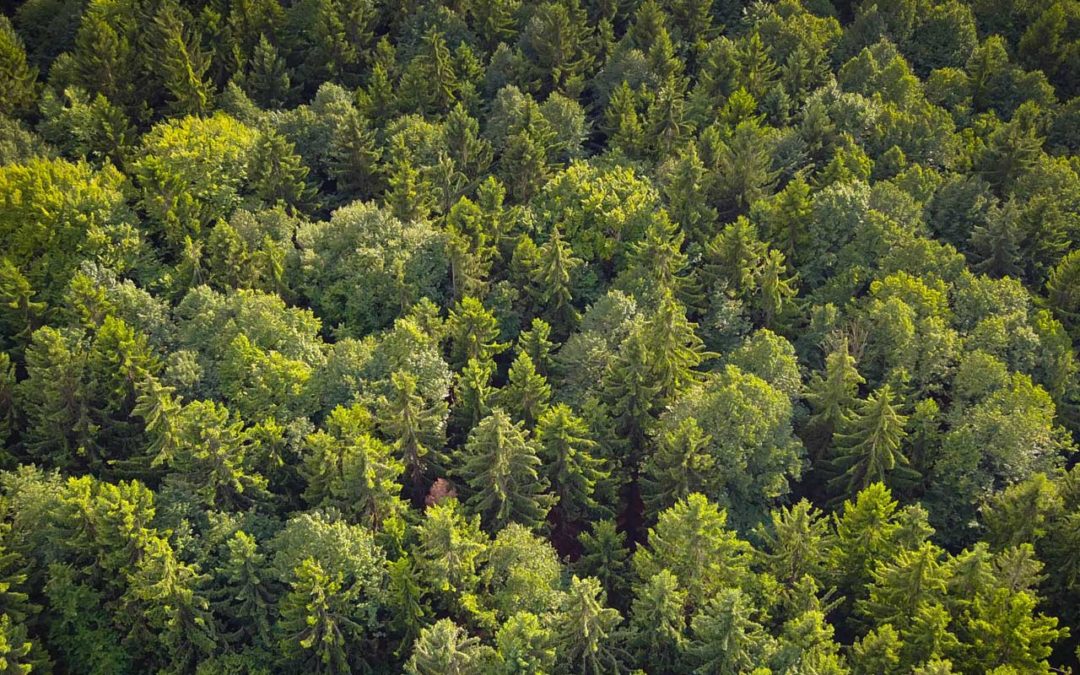There are more than 600 species of the Order of Conifers worldwide! Quite a number of them thrive in the Northern Hemisphere, such as the Pine, Cedar, Cypres and Fir or Spruce. Almost all Conifers are evergreen, winter-resistant and tolerate prolonged and severe frost. They grow to a height of 85 to 100 feet (25 to 30 metres), with a crown width and circumference of around 40 feet (12 metres) in diameter with mature trees.
In primeval forests and under the right climatic conditions, the trees can grow to be around 500 years old or even older! Then they can possibly reach a length of around 160 feet (50 meters), with some ancient examples even higher! A number of Conifers, however, have a shrub shape and become approximately 32 feet (10 meters) high.
Pine, Cedar, Cypres and Fir are the root names of Conifer families. For example, there is not one type of Pine tree, but several. A number of similarities that they then have stipulate that the trees in question belong to the Pine family. However, all mentioned species belong to the tree kingdom of the Conifers! But why is that so?
Cone bearer
The word Conifer comes from the Latin word ‘Coniferae’ which means ‘Cone-bearers’. This is derived from ‘Conus’ which refers to the shape of a Cone, and from ‘Ferre’ or ‘Bher’ which means ‘Carrying’ (‘Bher’ includes the meaning of ‘fruit’ or ‘bearing’ children as in pregnancy).
In Dutch language the word ‘Cone’ is ‘Kegel’, which also refers to the shape of a cone, and in mathematics it is also called ‘Conus’, described as:
‘A geometrically elongated shape with a circle as the ground surface, ending in a point. Between the two ends of the cone is the curved mantle on the outside, and inside the central vertical axis.’
The growth, size and position of the cones differs per Conifer species. The cones are on the branches, standing or hanging on them, with the pinnacle end of the cones pointing outwards.
Taxonomy
Taxonomy is the systematic classification of the variety of organisms on Earth. This distinguishes itself in eight important taxonomic grades:
Life, Domain, Empire, Tribe, Class, Order, Family, Genus, and Species.
Conifer in the taxonomic classification belongs to the Order of ‘Coniferales’ (being the ‘Cone-bearers’). As a descriptive plant name (which also applies to trees), the Latin designation is included as a taxonomic standard as ‘Coniferae’.
Conifers are wind bloomers. They belong to the ‘Seed Plants’ (Spermaphyta) class, in the ‘Naked Seed’ category (Clade ‘Gymnospermae’). Also, Conifers can be monoecious or dioecious. This relates to the propagation mechanism of the trees, which is represented in the cones. (More information is included in part 3 of this series of articles entitled ‘Cones and Strobili’).
Worldwide
Conifers grow largely in temperate climate zones and occur throughout the world. In subtropical and mediterranean parts of the world, trees grow in higher areas in the mountains where it is cooler. By nature and in the right climate, the trees grow together in large numbers as forests and woods, such as in the American and Canadian primeval forests, the Scandinavian countries, the German forests or the Siberian taigas.
History
In 2011, remains of Pine trees and deciduous trees were found during excavations nearby te city Utrecht in the Netherlands, which are estimated to be 1.2 million years old. This tree species therefore naturally also occurs in the Netherlands. In Belgium and Germany there are still a number of places where these remains of primeval forests occur in the layers of the ‘Tertiary Upper Pliocene’ or ‘Quaternary Lower Pleistocene’.
Lignite
These are chunks of prehistoric wood that are not completely decayed. They have the form of brown coal, which has a red-brown color, and is also called ‘whip’, ‘spriet’, ‘lignite’ or old-fashioned ‘prits’. These chunks consist of pieces of branches and parts of tree trunks, sometimes up to half a meter long.
Even older humus layers of primeval forest layers have been further thickened, from soft peat layer to brown coal hardened, after which it has become black coal. This mineral-rich soil has a high sulfur content and has been used extensively as a fuel in the last century.
Place names
Many place names in the Netherlands still refer to the forests that once were, and the ancient woods that were originally present, such as ‘Midwoud’ in North Holland, which stands for the ‘Middlewoods’, and ‘Den Bosch’ meaning ‘The Forest’, (later called ‘s-Hertogenbosch’), in the south of the country.
Do you know of such ancient names of places and arias in your country? Even today in our warmed climate and even below sea level in the Netherlands, Conifers are doing great! Unfortunately, the forests that originated in the lower lands have all disappeared.
Backlash
This has happened historically for a variety of reasons, and in recent decades we have been able to add new factors such as population growth, intensive livestock farming and economic downturn, decline in nature due to climatic conditions (storms, floods and forest fires), overly flexible legislation on logging permits, insufficient replanting and the introduction of cultivars (for example for accelerated timber cultivation).
Future?
It is therefore perhaps for the first time in history that people have been confronted with the demand for large-scale new planting of forests. We have never had to think about it this way before! But lets hope we can do it. We might wonder how we would want our planet to look like, now and in the future?
© 2019 | Margreet Wilschut
www.margreetotto.net
*******
Click on the links for the next parts:
CONIFERS 1 – INTRODUCTION
Next part:
CONIFERS 2 – FUNCTION AND PURPOSE
CONIFERS 3 – LEAF AND FOLIAGE
CONIFERS 4 – CONES AND STROBILI
CONIFERS 5 – FAMILIES
CONIFERS 6 – GROWING
CONIFERS 7 – GERMINATION SEEDS

